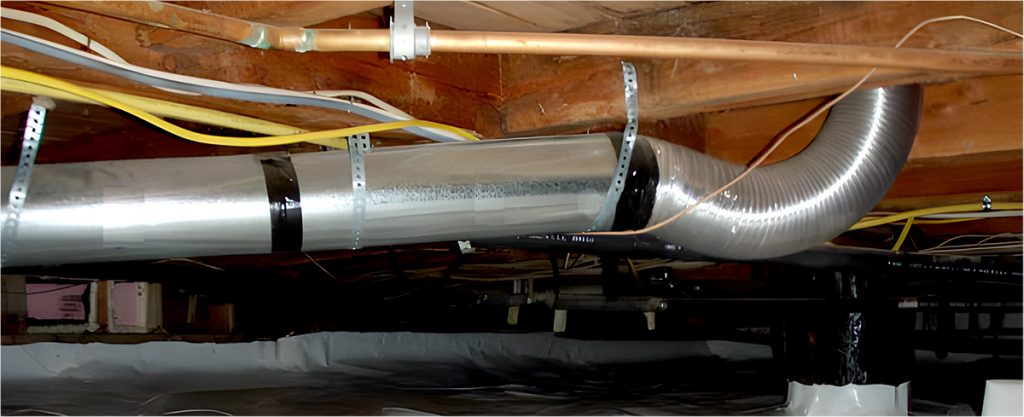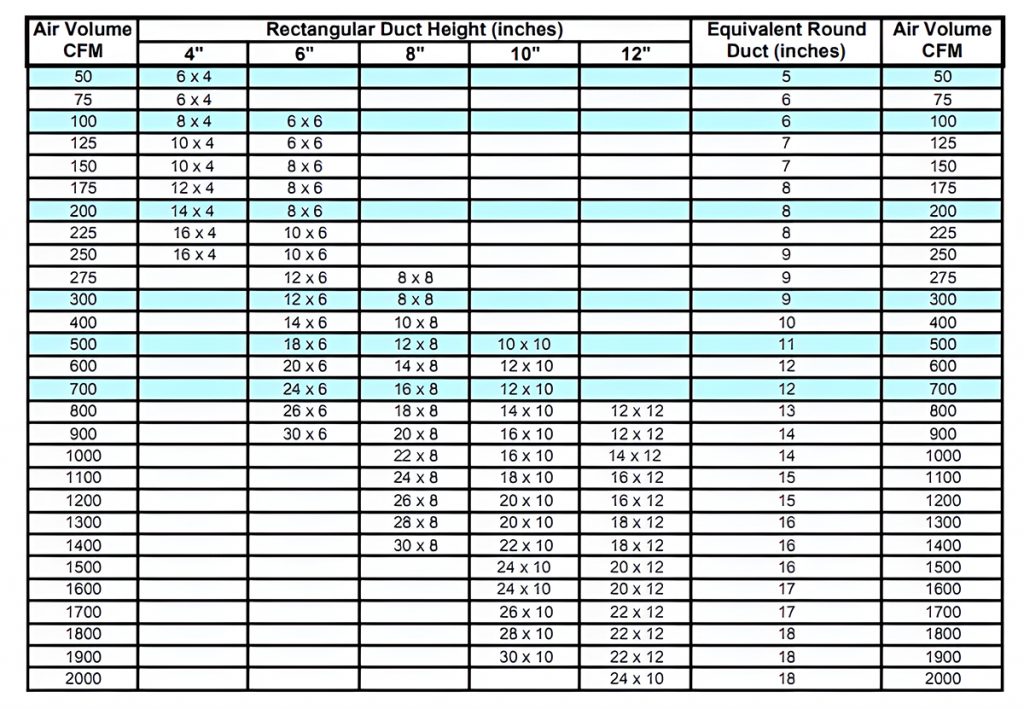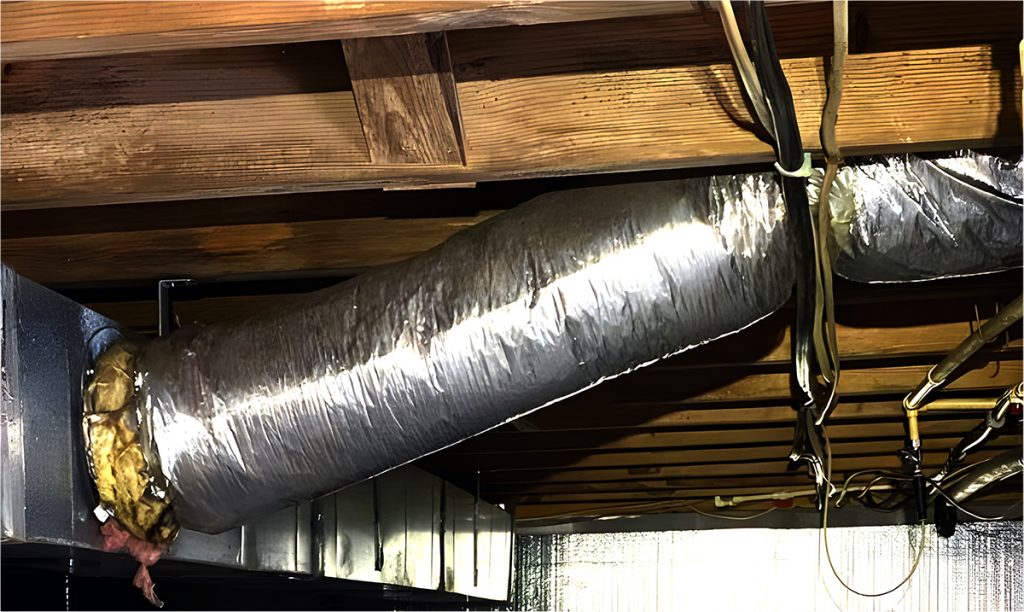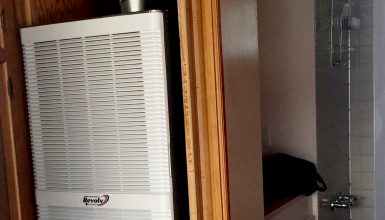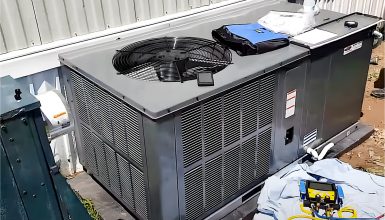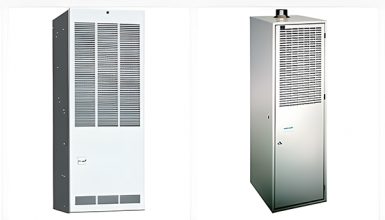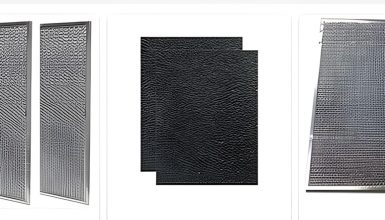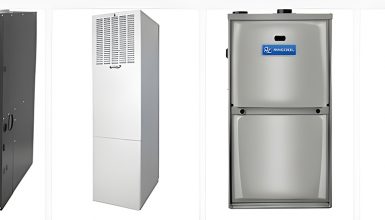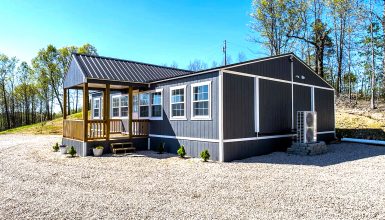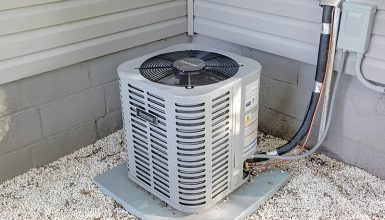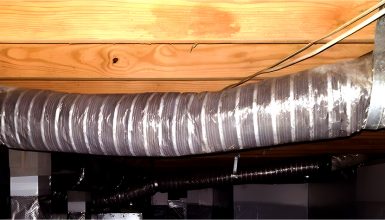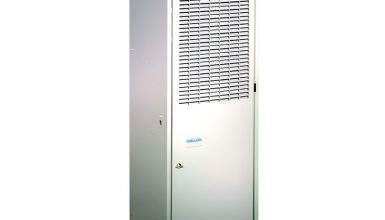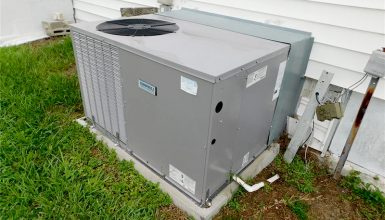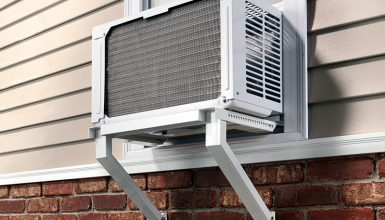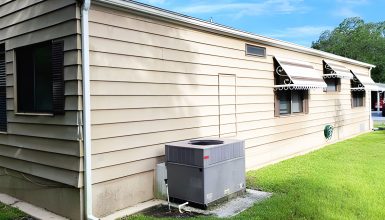The crossover duct is the workhorse of your mobile home’s HVAC system. They are essential for distributing air evenly throughout your living space. Without properly sized crossover ducts, you’d be bundling up in sweaters in one room and cranking up the AC in another. Now, that’s a rollercoaster of temperatures we don’t want! So, let’s delve into the nitty-gritty of sizing these vital ducts for your mobile home.
The Relation Between HVAC Capacity and Duct Size
Are you ready for a trip behind the scenes of your mobile home’s comfort system? The journey starts with your HVAC system. Imagine it as the heart of your home, pumping warm or cool air to every corner. But the key here isn’t just the temperature; it’s the airflow. It is where the Cubic Feet per Minute (CFM) concept steps in. Think of it as the speedometer for your HVAC system.
See, each HVAC system has a CFM rating. It’s like a recipe for the perfect home temperature. The CFM tells us how much air your system can move in a minute. If the CFM is too low, you’re baking a cake at 200 degrees when the recipe calls for 350. Not the best outcome, right? The same principle applies to heating or cooling your home.
So how do you fit the ducts into this equation? The duct size is directly related to the HVAC’s CFM. It’s like choosing the right size pipes for your plumbing system. Too small, and you’ve got a bottleneck. Too large, and you’re wasting energy. It’s all about finding that “Goldilocks” size for your HVAC system’s airflow.
How to Determining Crossover Duct Sizes
Now that we’ve got the gist of how our HVAC system works and how airflow plays its part, let’s step into the shoes of a home improvement detective. Our mission is to crack the code of the duct sizing chart.
Think of the duct sizing chart as a treasure map guiding you to the perfect size. And the treasure? Well, that’s your home’s sweet spot of comfort and efficiency. Let’s break it down step by step.
First, you must know your HVAC system’s CFM – the air it pushes through per minute. This number is usually in the manual that came with your system. However, a quick call to your HVAC manufacturer should do the trick if it’s missing or you’ve misplaced it.
Once you have the CFM, it’s time to break out the duct sizing chart. Picture it like a simple grid, with one side representing the air flow rate (your CFM) and the other the friction loss rate – a fancy term that means the resistance air meets when moving through the ducts.
Now, simply find your CFM on the chart and follow that line until it intersects with the appropriate friction loss rate (this usually hovers around 0.1 for residential homes). The point where these lines meet? Bingo! That’s your ideal duct size.
And if charts and grids are not your things, fret not! Plenty of duct sizing calculators online do the heavy lifting for you. Just pop in your CFM, and voila, you get the ideal duct diameter for your home.
Examples of Crossover Duct Sizing
Let’s explore it with practical examples, looking at single and double-wide mobile homes.
Single-Wide Mobile Home
First up, let’s consider a single-wide mobile home. These homes are usually cozier, meaning they don’t require as large an HVAC system. So, let’s say your system has a CFM of 800. You break out the duct sizing chart, follow the 800 CFM line, and intersect it with the 0.1 friction loss rate. The chart guides you to an 8-inch diameter duct. You’ve got your duct size! No sweat, right?
Double-Wide Mobile Home
Let’s venture into the larger, more spacious double-wide mobile home. Your HVAC system here is working harder, dealing with a CFM of 1600. Back to the chart we go! Trace the line from the 1600 CFM to the usual 0.1 friction loss rate, and you land on a 12-inch diameter duct. A little larger, but that makes sense considering the extra space we’re dealing with.
And remember, these duct sizes aren’t set in stone. They’re a starting point; your home’s unique layout and your HVAC system’s specifics could lead you to tweak these sizes a bit.
How to Choose the Perfect Crossover Duct Replacement
We’ve learned a lot about duct sizing and the factors to consider. Now let’s say you’re dealing with an old, underperforming crossover duct in your mobile home. It’s given you many years of service, but it’s time to usher in a new era of comfort and efficiency. So, how do you choose the perfect replacement?
Step 1
First things first, size matters. And we’re not just talking about the diameter here. You’ll need to know the length of the duct run too. With your HVAC’s CFM rating and trusty duct sizing chart or calculator, you’ll have the diameter down pat. For the length, simply measure the old duct run. Remember, accuracy is vital!
Step 2
Next up, the bends. Count the number of turns in your existing ductwork. More turns might mean upsizing the replacement duct to keep airflow smooth and robust. But it’s also an excellent time to consider if you can reduce these bends during the new duct installation – fewer hurdles in our airflow marathon, right?
Step 3
Let’s put this into action. Suppose your mobile home has an HVAC system with a CFM of 1000, and your old duct run is 40 feet with two bends. The duct sizing chart suggests a 10-inch duct. But with the extra length and bends, you might consider bumping it to a 12-inch diameter. That’s like choosing the slightly bigger moving truck to ensure all your stuff fits and arrives at the new house smoothly.
Step 4
Lastly, consider the material. Insulated flexible ductwork is a popular choice for mobile homes. Look for a high R-value for better insulation and energy efficiency. Something like the “Master Flow 12 in. x 25 ft. Insulated Flexible Duct R6 Silver Jacket” would fit the bill. It’s sturdy, efficient, and designed to deliver optimal performance.
Conclusion
Choosing a replacement crossover duct may seem daunting, but now you have the inside scoop! Remember, it’s all about creating a comfortable, energy-efficient home. You’re not just replacing a duct; you’re improving your home, one well-informed decision at a time!

